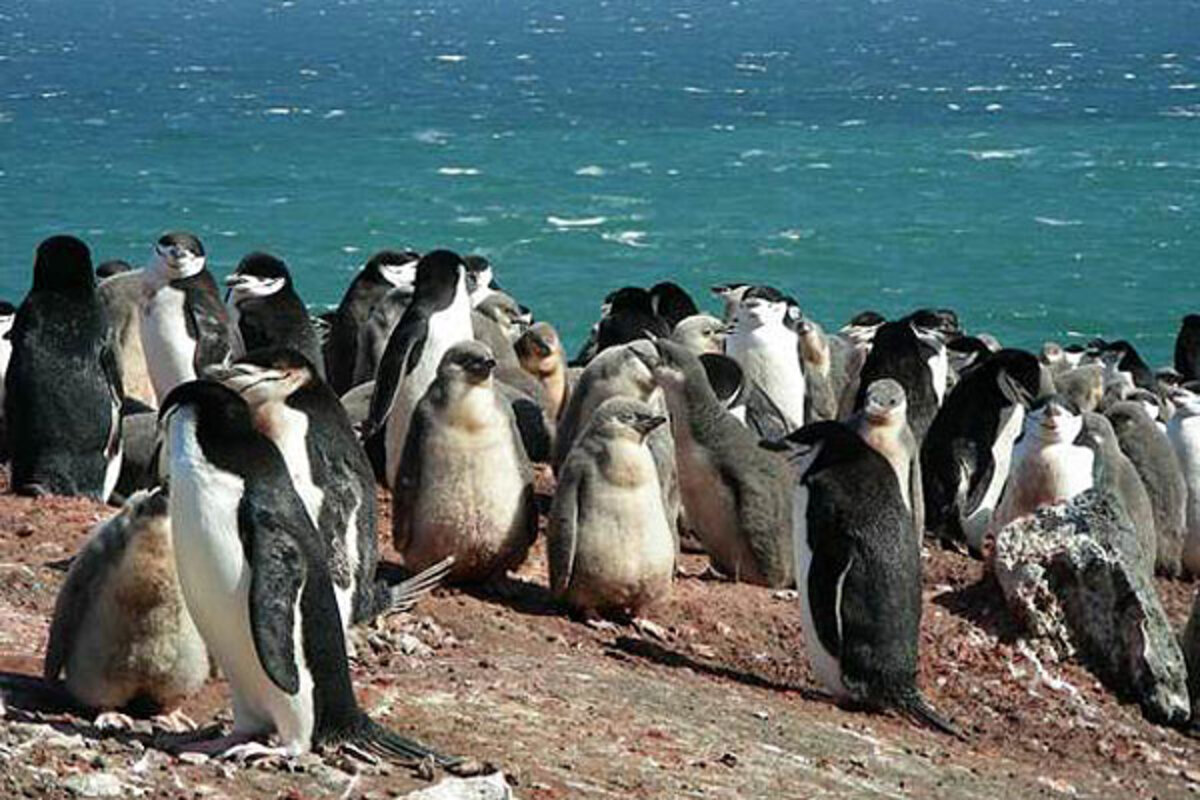Is global warming responsible for chinstrap penguin decline?
Loading...
A population of chinstrap penguins is feeling the heat, with more than one-third of a breeding colony lost in the past 20 years, new research finds.
A warming planet, which is causing����(and elsewhere) to melt, may ultimately be to blame for��, the researchers said. That's because the chinstraps' main food, shrimplike creatures called krill, depend on algae that attaches to that ice.
"Actually, in the '90s it was thought that the climate change would favor the chinstrap penguin, because this species prefers sea waters without ice, unlike��, which prefers the ice pack," study researcher Andres Barbosa told LiveScience. He added that at the time, chinstraps, named for the thin black facial line from cheek to cheek, seemed to increase in numbers, with some new colonies being established.
The sea-ice decline in the winter, however, has become so big that it is now impacting krill populations, said Barbosa, of the National Museum of Natural Sciences in��Madrid.
Counting chinstraps
Barbosa and his colleagues tallied chinstrap penguins (Pygoscelis antarctica) in the Vapour Col colony of Deception Island, in the Antarctic's South Shetland Islands in 1991-92 and 2008-09. They photographed nests in 19 subcolonies, mainly in December when chicks were hatching. []
Results, which ended up including just 12 of the subcolonies due to availability of data, showed the occupied nests had declined by 36 percent between 1991 and 2008.
Barbosa and colleagues ruled out research activity as the cause for the loss since both studied populations and those used as controls showed similar patterns of decline.
Tourism is also not a likely culprit. Deception Island, built on a volcano, is one of the��; the 2007-08 year saw some 25,000 visitors, according to the International Association of Antarctica Tour Operators (IAATO). Meanwhile, the nearby chinstrap penguin colony of Bailey Head, which is usually visited by 2,000 to 3,500 people every season, showed a decline of about 50 percent.
Rather, a dip in the krill population may be to blame, an idea supported by the fact that Adélie penguin population (P. adeliae) in the region is also declining, while the����(P. papua), which has a more variable diet, is not.
(The chinstrap, gentoo and Adélie penguins are the three pygoscelid species (in the��Pygoscelis��genus) that inhabit the Antarctic Peninsula, the region of the Antarctic continent where the effects of climate change are more evident, the researchers noted.)
Saving penguins
But Barbosa says the chinstraps aren't a lost cause.
"This is an example of how the human activity far from the poles can affect the life at thousands of kilometers far from our homes," Barbosa told LiveScience. "Therefore, a more responsible use of the energy and the fossil fuels is necessary to preserve the planet and then the Antarctica."
In addition, he said, to protect the organisms that call the Antarctic home, we need to reduce human impact by reducing overfishing, tourism and even research activity.
The research was detailed online May 22 in the journal Polar Biology.
Follow LiveScience on Twitter��. We're also on����&��.
Copyright 2012��, a TechMediaNetwork company. All rights reserved. This material may not be published, broadcast, rewritten or redistributed.




